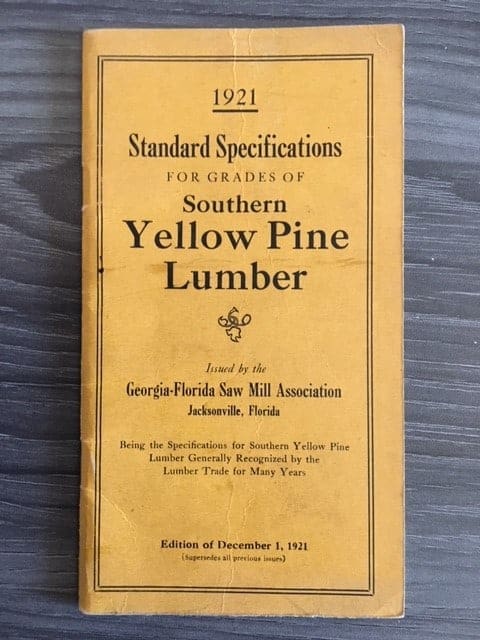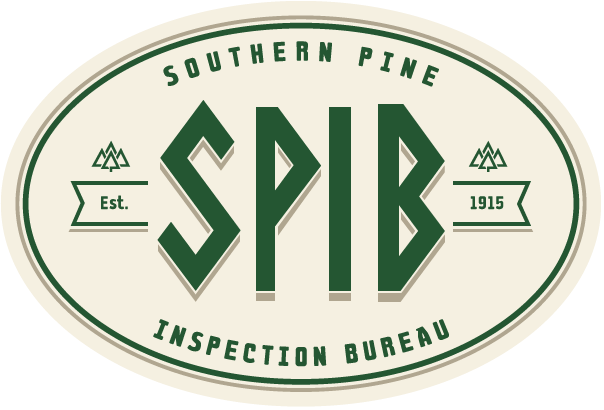
Lumber Grade-Marking History: 1927
Introduction
One of the most notable events in the United States in 1927 was undoubtedly the Great Mississippi Flood – something that impacted more than 700,000 people and that was considered the greatest national disaster in the history of the country up to that time. August was also the year that then-President Calvin Coolidge announced that he would not run for president in 1928, shaping the face of American politics for years to come.
1927 was also a formative year for the lumber industry, having been characterized as one of the most important since the formative period of the Southern Pine Association dating all the way back to 1915. Up to this point, all of the disparate forces within the industry seemed to operate totally independently from one another. Then, suddenly, they all joined together for the common good – exactly the way it should have been all along.
In this section, you will find out more about how members of the former Georgia-Florida Saw Mill Association finally subscribed to the Southern Pine Association as a body, bringing their 30 years of experience and industry standing with them. You will learn about the continued evolution of lumber grade-marking, which acted as a basic solution to certified materials for the support of better building programs. You will also learn more about how the Pennsylvania Lumbermen’s Association of Philadelphia aggressively pushed the grade-marking idea, for the benefit of all of us.
We hope that you will continue to find the journey of the industry fascinating, as it sheds critical light on the hard work, care and dedication that was required to shepherd it from its nascent stages into the giant we all know it as today.
1927
The year was characterized as being one of the industry concentration unwitnessed since the formative period of the Southern Pine Association early in 1915. All forces within the industry, previously seeming to function separately, joined together for the common good. Members of the former Georgia-Florida Saw Mill Association, an organization of 30 years standing, subscribed to the Southern Pine Association services as a body.
Official action to distinguish, as far as practicable, between the various types of southern pine –longleaf, shortleaf, dense and non-dense – so that each class of mill product could be recommended for the purpose for which it was best suited, was taken. The policy of selling a particular class of lumber or species of wood for every and all purposes was gone.
Lumber grade-marking provided a basic solution to certified materials for the support of better building programs. The demand for grade-marked lumber by distributors, specifiers and consumers evidenced the well rooted and general acceptance of the practice. The National Lumber Manufacturers Association unqualifiedly regarded grade-marked and trade-marked lumber as the criteria for better lumber. Government purchasing offices, among these being, the U. S. Engineers at Florence, Alabama, who purchased for the Muscle Shoals project, were convinced of the protection grade-marking afforded them. They specified on all of their requisitions that lumber stock must be grade-marked and manufactured in accordance with American Lumber Standards. The Pennsylvania Lumbermen’s Association of Philadelphia aggressively pushed the grade-marking idea. In September 1927, they circularized their membership with:
A word to you about Grade-Marked Lumber. Our Association at its Annual Meeting endorsed this movement, and it has been reaffirmed since by our Executive Committee and Board of Directors, with the suggestion that we should go further than merely endorsing the movement. If it has any merit, and we believe that you will agree with us that it has, we should attempt to put it in actual practice.
Many of the manufacturers throughout the country have adopted the practice of grade-marking their lumber and we believe, from what we have been able to learn from investigation, that nearly all the lending lumber manufacturers throughout the country are in favor of grade- marked lumber and are willing to fall in line, but are awaiting the demand. This demand, of course, must come from the dealers.
At the last annual convention of the National Retail Lumber Dealers Association held in Tacoma of this year, grade-marked lumber was one of the outstanding topics of the convention and was heartily endorsed by all present. If we are in favor of the plan, the time is now ripe to put it in effect, as nearly all the leading retailers and manufacturers throughout the country are in favor of it.
It can’t be doubted that if the movement becomes universal and all the leading mills throughout the country grade-mark their lumber, it will have a beneficial effect on the industry as a whole. It will stop the juggling of grades; it means that when a certain grade of lumber is called for, the ultimate consumer will be sure of getting what he bought or contracted for. It must necessarily redound to the benefit of every honest dealer throughout the country. His competitor will then be called upon to deliver what Is called for without substitution. We believe that you will agree with us that much dishonest competition will be eliminated.
If you are in favor of grade-marked lumber, as we believe you are, will you not please start now by placing upon your orders for lumber that the same shall be grade-marked wherever possible. Let us get behind this movement with a will and determination to carry through. It can only be done by the concentrated efforts of all.
Practically all retail lumber dealers throughout the country, receiving the American Lumberman questionnaire sent out during the summer of 1927, commended the benefits of grade-marking. Many other organizations commented favorably.
Grade-marking of lumber had arrived – to stay.

Grade-marking analyzed from the manufacturers’ viewpoint, embraced:
What are grading rules? They are guides or specifications to employees in the refinement of a product, and likewise indicate to the public, that the manufacturer has an intimate knowledge of his wares.
Why grade-mark a product? To acknowledge publicly, sincerity or belief in the product.
What benefits are derived from trade-marking? A guarantee of uniform quality from particular mills.
How do we understand them today? A combination of the foregoing three is an identification of stock, as well as, a badge of responsibility.
Grading rules to guide; grade-marking to identify; and trademarking to establish responsibility. The human element and its effect on the process is considerable. Basically a No. 1 board is a No. 1 board whether so stamped or not. Lumber grading, however, not being subject to exactness in application permits some leeway in the matter of grade judgment. Stamped lumber prompts more care in the grading process and protects the grade from subsequent change.
Grade-marking analyzed from the retailers’ viewpoint, embraced:
Why grade-mark at all? To establish public confidence.
Do manufacturers want to grade-mark? Some. Wholesalers – by no means. Retailers – a few.
Will grade-marked lumber give the building public what it wants? Unquestionably – because it is the public demand for protection in buying.
Why does the public not demand grade-marked lumber? Mistrust of all lumbermen, manufacturers, wholesalers and retailers.
Will grade-marking in and by itself alone reestablish all lost public confidence? Will do a great deal to bring this about.
What is wrong with grade-marking now?
1. The manufacturers themselves are not all sold on the value of losing some business today to make more business tomorrow.
2. The mills that grade-mark do not yet run uniform in grades with each other.
3. The retailer is not sure of getting all his lumber requirements graded uniformly and grade-marked.
4. The public has not yet been told the story of grade-marked wood enough to demand the grade-marked lumber.
What can be the remedies:
1. To have all lumber in America grade-marked as a business principle so that the dealer, and his public can get all lumber with a guarantee as to quality.
2. To perfect grading procedure so that the retailer can be reasonably sure one mill’s grading is equal grade for grade to the grading of another mill.
3. To carry on an educational campaign that will enable each retailer to meet all objections to grade-marked lumber that may be presented by his staff and his customers.
4. To go to the public with the message that lumber under grade-marked handling is worthy of the public’s renewed confidence.
The retailers strongly regarded grade-marking as of direct benefit to their business of community building.
Fifteen reasons why grade-marking should be favored were:
1. It encourages more careful and uniform grading.
2. It improves the trimming and gives the lumber a better appearance.
3. It identifies the grade from manufacturer to ultimate customer and is a potent factor in establishing confidence in all concerned.
4. It distinguishes lumber that is well manufactured, properly seasoned and carefully graded from “just lumber.”
5. In case of official inspection or reinspection, responsibility of manufacture can readily be determined.
6. It forms a sound basis for advertising and trade extension work.
7. It is a guarantee of American Lumber standards.
8. It is a certificate of quality, assuring integrity of grade.
9. It is a powerful weapon against substitutes.
10. It saves the dealer the expense of regrading his stock.
11. It will educate the public that good lumber can still be obtained.
12. It will simplify the architects’ specifications, and assure his getting what he specifies, thus extending the use of lumber.
13. If dealers generally would handle trade-marked, grade-marked lumber, it would be a powerful influence to help stabilize their market and would lift their competition up to a higher plan of service.
14. It would be a tremendous influence for better built houses and buildings.
15. It will be the means by which the industry can avoid a “pure food law” by Congress or some of the legislatures.
The Federal Trade Commission conducted a fishing expedition of the activities of the Southern Pine Association.
